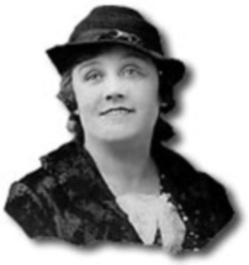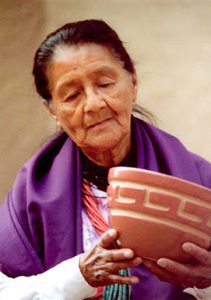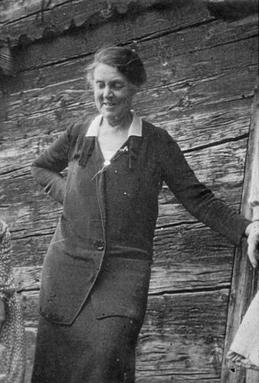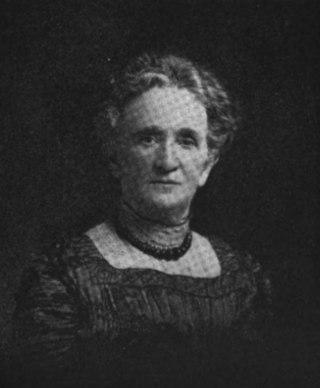
Norman Percevel Rockwell was an American painter and illustrator. His works have a broad popular appeal in the United States for their reflection of the country's culture. Rockwell is most famous for the cover illustrations of everyday life he created for The Saturday Evening Post magazine over nearly five decades. Among the best-known of Rockwell's works are the Willie Gillis series, Rosie the Riveter, The Problem We All Live With, Saying Grace, and the Four Freedoms series. He is also noted for his 64-year relationship with the Boy Scouts of America (BSA), during which he produced covers for their publication Boys' Life, calendars, and other illustrations. These works include popular images that reflect the Scout Oath and Scout Law such as The Scoutmaster, A Scout Is Reverent and A Guiding Hand,.

Paul Revere was an American silversmith, engraver, folk hero, early industrialist, Sons of Liberty member, and Patriot. He is best known for his midnight ride to alert the colonial militia in April 1775 to the approach of British forces before the battles of Lexington and Concord, as dramatized in Henry Wadsworth Longfellow's 1861 poem, "Paul Revere's Ride".

Clarice Cliff was an English ceramic artist and designer. Active from 1922 to 1963, Cliff became the head of the factory creative department.
Events from the year 1932 in art.
Kate Clifford Larson is an American historian and Harriet Tubman scholar. Her 2003 biography of Harriet Tubman, Bound for the Promised Land was one of the first non-juvenile Tubman biographies published in six decades. Larson is the consultant for the Harriet Tubman Special Resource Study of the National Park Service and serves on the advisory board of the Historic Context on the Underground Railroad in Delaware, Underground Railroad Coalition of Delaware.

Maria Poveka Montoya Martinez was a Native American artist who created internationally known pottery. Martinez, her husband Julian, and other family members, including her son Popovi Da, examined traditional Pueblo pottery styles and techniques to create pieces which reflect the Pueblo people's legacy of fine artwork and crafts. The works of Maria Martinez, and especially her black ware pottery, survive in many museums, including the Smithsonian, the Metropolitan Museum of Art, the Denver Art Museum, and more. The Penn Museum in Philadelphia holds eight vessels – three plates and five jars – signed either "Marie" or "Marie & Julian".

Maria Margarita "Margaret" Tafoya was the matriarch of Santa Clara Pueblo potters. She was a recipient of a 1984 National Heritage Fellowship awarded by the National Endowment for the Arts, which is the United States government's highest honor in the folk and traditional arts.

Margaret Fitzhugh Browne was an American painter of portraits, indoor genre scenes, and still lifes.

Helen Osborne Storrow was a prominent American philanthropist, early Girl Scout leader, and chair of the World Committee of the World Association of Girl Guides and Girl Scouts (WAGGGS) for eight years. She founded the First National Girl Scout Leaders' Training in Long Pond, Massachusetts; headed the leaders' training camp at Foxlease, UK; and donated the first of the WAGGGS World centres, Our Chalet.
Clara Elsene Peck was an American illustrator and painter known for her illustrations of women and children in the early 20th century. Peck received her arts education from the Minneapolis School of Fine Arts and was employed as a magazine illustrator from 1906 to 1940. Peck's body of work encompasses a wide range, from popular women's magazines and children's books, works of fiction, commercial art for products like Ivory soap, and comic books and watercolor painting later in her career. Peck worked during the "Golden Age of American Illustration" (1880s–1930s) contemporaneous with noted female illustrators Jessie Willcox Smith, Elizabeth Shippen Green and Violet Oakley.

Edith Guerrier (1870–1958) was a pioneer in the field of library science. Guerrier is best known for developing progressive library programs in the 1890s, including a reading program and a pottery studio for girls of Boston's North End, an urban immigrant center during the Progressive Era.

North Bennet Street School (NBSS) is a private vocational school in Boston, Massachusetts. NBSS offers nine full-time programs, including bookbinding, cabinet and furniture making, carpentry, jewelry making and repair, locksmithing and security technology, basic piano technology, advanced piano technology, preservation carpentry, and violin making and repair, as well as a range of short courses and continuing education opportunities. Housed for more than 130 years at 39 North Bennet Street, near the Old North Church in Boston's North End, the School completed renovations on the former Police Station One and former City of Boston Printing Plant in September 2013. The subsequent move to the fully renovated 65,000 sq. ft. facility at 150 North Street brought all of their programs under one roof.

China painting, or porcelain painting, is the decoration of glazed porcelain objects such as plates, bowls, vases or statues. The body of the object may be hard-paste porcelain, developed in China in the 7th or 8th century, or soft-paste porcelain, developed in 18th-century Europe. The broader term ceramic painting includes painted decoration on lead-glazed earthenware such as creamware or tin-glazed pottery such as maiolica or faience.
The Boston Women's Heritage Trail is a series of walking tours in Boston, Massachusetts, leading past sites important to Boston women's history. The tours wind through several neighborhoods, including the Back Bay and Beacon Hill, commemorating women such as Abigail Adams, Amelia Earhart, and Phillis Wheatley. The guidebook includes seven walks and introduces more than 200 Boston women.

American art pottery refers to aesthetically distinctive hand-made ceramics in earthenware and stoneware from the period 1870-1950s. Ranging from tall vases to tiles, the work features original designs, simplified shapes, and experimental glazes and painting techniques. Stylistically, most of this work is affiliated with the modernizing Arts and Crafts (1880-1910), Art Nouveau (1890–1910), or Art Deco (1920s) movements, and also European art pottery.

The Saturday Evening Girls club (1899-1969) was a Progressive Era reading group for young immigrant women in Boston's North End. The club hosted educational discussions and lectures as well as social events, published a newspaper called the S. E. G. News, and operated the acclaimed Paul Revere Pottery. Financed by philanthropist Helen Storrow and run by librarian Edith Guerrier and her partner, artist Edith Brown, the club originated at the North Bennet Street Industrial School (NBSIS), a community charity building that provided educational opportunities and vocational training. Meetings were later held at the Library Club House at 18 Hull Street. Storrow also provided a house in Gloucester, Massachusetts, where club members could vacation in the summer.
Carmen L. Browne was an early twentieth century author and illustrator, particularly of children's books.

Fanny Goldstein (1895-1961) was an American librarian, bibliographer, and editor who founded Jewish Book Week. As head of the West End branch of the Boston Public Library (BPL), she was the first Jew to direct a public library branch in Massachusetts. During her tenure Goldstein made a point of recognizing the literature of the various ethnic communities of Boston, and curated a unique collection of Judaica. She also published literary articles and bibliographies and gave lectures on Jewish literature. After retiring in 1958 she became the literary editor of the Jewish Advocate.

Mary Harrod Northend (1850-1926) was an American writer specializing in American colonial architecture and home furnishings. She is best known for the thousands of photographs she either took or commissioned to illustrate her books and articles.

Black-on-black ware is a 20th- and 21st-century pottery tradition developed by Puebloan Native American ceramic artists in Northern New Mexico. Traditional reduction-fired blackware has been made for centuries by Pueblo artists and other artists around the world. Pueblo black-on-black ware of the past century is produced with a smooth surface, with the designs applied through selective burnishing or the application of refractory slip. Another style involves carving or incising designs and selectively polishing the raised areas. For generations several families from Kha'po Owingeh and P'ohwhóge Owingeh pueblos have been making black-on-black ware with the techniques passed down from matriarch potters. Artists from other pueblos have also produced black-on-black ware. Several contemporary artists have created works honoring the pottery of their ancestors.


















